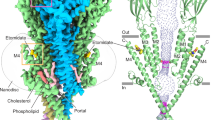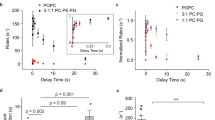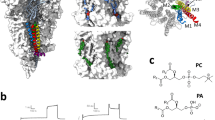Abstract
ANAESTHETICS which reversibly block electrical activity in nerves can be used as chemical probes to provide information about the dynamic processes which occur during the nerve impulse. Interpretation of this information requires an understanding of the relevant physical interactions responsible for the action of these substances on the cell membrane. It has frequently been suggested1,2 that the classical, ionizable, local anaesthetics, such as procaine, act on the excitable membrane by a different set of rules than do the non-ionizable anaesthetics such as the alcohols. This hypothesis resulted from arguments3–5 that the cationic forms of the local anaesthetics are directly responsible for blockage of electrical activity. These arguments contrast with earlier conclusions6 and have recently been questioned by Strobel and Bianchi7. Observations of interactions between phospholipids, calcium ions and the classical local anaesthetics8,9, and the effect of raised calcium concentration on procaine block10, have been used to support the hypothesis that competitive interaction of local anaesthetics for calcium binding sites is responsible for block of excitability8–10—a hypothesis which also requires that non-ionizable alcohols play a different part.
This is a preview of subscription content, access via your institution
Access options
Subscribe to this journal
Receive 51 print issues and online access
$199.00 per year
only $3.90 per issue
Buy this article
- Purchase on Springer Link
- Instant access to full article PDF
Prices may be subject to local taxes which are calculated during checkout
Similar content being viewed by others
References
Ariens, E. J., Simonis, A. M., and van Rossum, J. M., in Molecular Pharmacology (edit. by Ariens, E. J.), 1, 365 (Academic Press, New York, 1964).
Ritchie, J. M., and Greengard, P., Ann. Rev. Pharmacol., 6, 405 (1966).
Dettbarn, W. D., Biochim. Biophys. Acta., 57, 73 (1962).
Ritchie, J. M., and Greengard, P., J. Pharmacol. Exp. Therap., 133, 241 (1961).
Ritchie, J. M., Ritchie, B. R., and Greengard, P., J. Pharmacol. Exp. Therap., 150, 160 (1965).
Skou, J. C., Acta Pharmacol. Toxicol., 10, 281, 292, 305, 325 (1954).
Strobel, G. E., and Biancni, C. P., Abstr. Amer. Biophys. Soc. Twelfth Meet., 8, A-136 (1968).
Blaustein, M. P., and Goldman, D., Science, 153, 429 (1966).
Feinstein, M., J. Gen. Physiol., 48, 357 (1964).
Blaustein, M. P., and Goldman, D., J. Gen. Physiol., 48, 1043 (1966).
Agin, D., Hersh, L., and Holtzman, D., Proc. US Nat. Acad. Sci., 53, 962 (1965).
Hersh, L., Mol. Pharmacol., 3, 581 (1967).
Narahashi, T., J. Cell. Comp. Physiol., 64, 73 (1964).
Shanes, A. M., Pharmacol. Rev., 10, 56 (1958).
Shanes, A. M., Freygang, W. H., Grundfest, H., and Amatniek, E., J. Gen. Physiol., 42, 793 (1959).
Taylor, R. E., Amer. J. Physiol., 196, 1071 (1959).
Author information
Authors and Affiliations
Rights and permissions
About this article
Cite this article
SCHAUF, C., AGIN, D. Cooperative Effect of Certain Anaesthetics on the Lobster Giant Axon. Nature 221, 768–769 (1969). https://doi.org/10.1038/221768a0
Received:
Revised:
Issue Date:
DOI: https://doi.org/10.1038/221768a0
Comments
By submitting a comment you agree to abide by our Terms and Community Guidelines. If you find something abusive or that does not comply with our terms or guidelines please flag it as inappropriate.



